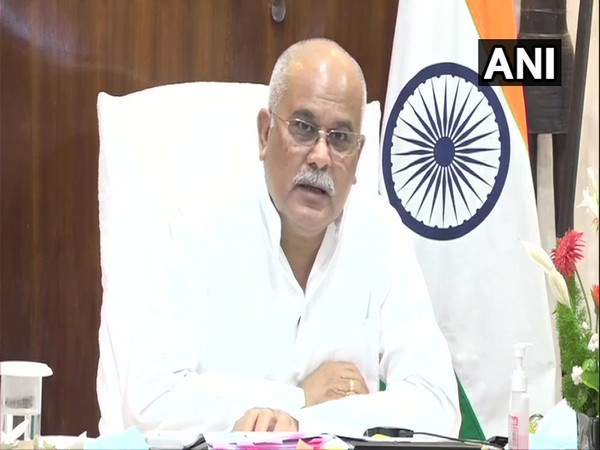Weapons of Mass Destruction and their Delivery Systems Amendment Bill, 2022 (GS Paper 2, Governance)

Why in news?
- Recently, the Parliament passed a bill, which seeks to ban funding of weapons of mass destruction and also empowers the Centre to freeze, seize or attach financial assets and economic resources of people engaged in such activities.
Details:
- The Weapons of Mass Destruction and their Delivery Systems (Prohibition of Unlawful Activities) Amendment Bill, 2022, piloted by External Affairs Minister S Jaishankar, was passed by the Rajya Sabha with a voice vote.
- The bill was approved by the Lok Sabha in April.
Key Highlights:
- The Weapons of Mass Destruction and their Delivery Systems (Prohibition of Unlawful Activities) Act, passed in 2005, only banned manufacture of weapons of mass destruction.
- The amendment bill seeks to insert a new Section 12A in the existing law which states that "no person shall finance any activity which is prohibited under this Act, or under the United Nations (Security Council) Act, 1947 or any other relevant Act for the time being in force, or by an order issued under any such Act, in relation to weapons of mass destruction and their delivery systems."
Background:
- The Bill amends the Weapons of Mass Destruction and their Delivery Systems (Prohibition of Unlawful Activities) Act, 2005.
- The 2005 Act prohibits unlawful activities (such as manufacturing, transport, or transfer) related to weapons of mass destruction, and their means of delivery. Weapons of mass destruction are biological, chemical, or nuclear weapons.
Chhattisgarh government to rename three places of historical significance
(GS Paper 2, Governance)
Why in news?
- Recently, the Chhattisgarh Chief Minister instructed to change the names of three places in the state.
- As per the instructions, Chandkhuri, Giraudpuri and Sonakhan will now be renamed after the great personas and spiritual figures of the area.

New names:
- Chandkhuri will be known as Mata Kaushalya Dham Chandkhuri, Giraudpuri will be renamed as Baba Guru Ghasidas Dham Giraudpuri and Sonakhan will be called Shaheed Veer Narayan Singh Dham Sonakhan.
Mata Kaushalya Dham
- The only Kaushalya temple in the world is situated in Chandkhuri, adjacent to Raipur. Chhattisgarh is considered to be the birthplace of Mata Kaushalya and ‘nanihaal’ of Lord Ram.
- The state government has renovated the Mata Kaushalya temple, located in the middle of the pond, and has also beautified the pond.
Giroudpuri:
- Located in Balodabazar-Bhatapara district, Giroudpuri is the centre of faith for lakhs of followers of Satnam Panth. This is the birthplace of Baba Guru Ghasidas.
Sonakhan:
- Sonakhan area in Balodabazar-Bhatapara district is known for the valour of Shaheed Veer Narayan Singh, the first martyr of Chhattisgarh in the first freedom struggle of 1857.
The Earth is spinning faster
(GS Paper 1, Geography)
Why in news?
- The Earth recorded the shortest day ever in its life on 29 July when it completed a full spin in 1.59 milliseconds less than its standard 24-hour rotation.
- It nearly broke the barrier again this month, with 26 July being 1.50 milliseconds shorter than 24 hours.
What is happening with Earth’s rotation?
- It is elementary school knowledge that Earth takes exactly 24 hours to rotate on its axis, but something has changed since at least as early as 2020.
- The planet has been increasing its speed for some time now. In July 2020, Earth recorded its shortest month since the 1960s when 19 July was 1.47 milliseconds shorter than a typical 24-hour day.
- The following year, Earth continued to spin at a generally increased speed but did not break any records.
Even though nobody has been able to pinpoint the reasons behind it, scientists have speculated a number of processes could be behind this increased spin.

Chandler wobble:
- The reasons can be the melting of the glaciers and climate change at large, motions of the planet’s inner molten core, seismic activity and a phenomenon called the ‘Chandler wobble’.
- The Chandler wobble is a small deviation in the Earth’s axis of rotation, not unlike the quiver one sees when a spinning top gains momentum or slows down.
How does it impact life?
- The quickening rotation impacts various technologies on Earth, including the GPS satellites that use atomic clocks.
- A faster spin would mean Earth gets the same position a little earlier than the previous day. A half-a-millisecond equates to 10-inches or 26 centimetres at the equator.
- In short, GPS satellites which already have to be corrected for the effect of Einstein’s general relativity theory (the curve of space and time) are quickly going to become useless.
- It can also impact smartphones, computers and communication systems at large, which synchronise with Network Time Protocol (NTP) servers). It’s defined as the number of seconds since 00:00:00 Coordinated Universal Time (UTC) on 1 January, 1970.
Way Forward:
- To solve all this, international timekeepers may need to add a negative leap second, a “drop second.”
- The UTC, the primary time standard by which the world regulates clocks and time, has been updated with a leap second 27 times.
Researchers identify fungus for pyrene remediation
(GS Paper 3, Science and Tech)
Why in news?
- Researchers at the Council of Scientific & Industrial Research-Indian Institute of Petroleum (CSIR-IIP), Dehradun, have identified a fungus capable of removing toxic, recalcitrant, and carcinogenic polycyclic aromatic hydrocarbons (PAHs) from the environment.
PAHs:
- The rapid pace of economic development and industrialisation has resulted in the release of several PAHs into the environment.
- The PAHs are ubiquitous environmental pollutants originating from multiple sources, including combustion of petrogenic fossil fuels, and incomplete incineration of municipal wastes and biomass.

Pyrene:
- Pyrene, possessing four benzene rings, belongs to the highly toxic class of PAHs, with carcinogenic and mutagenic properties.
- It gets lodged into the environmental matrices like soil, water and atmosphere, resulting in widespread environmental pollution, necessitating adequate remediation of contaminated environmental matrices.
Trametesmaxima IIPLC-32:
- The researchers at IIP identified a white-rot fungus Trametesmaxima IIPLC-32, which has the potential to cause microbial degradation of pyrene.
- According to researchers, growing on dead plants, this fungus causes pyrene degradation using special enzymes.
Observations:
- The researchers used gas chromatographic-mass spectrometer and serotome analysis for their study. Gas chromatographic-mass spectrometric identification of prominent metabolites helped determine the pyrene degradation pathway.
- As found by researchers, the pyrene concentration decreased by 79.8 percent, 65.37 percent and 56.37 percent within 16 days from the initial levels of 10 mg per litre, 25 mg per litre and 50 mg per litre, respectively. The serotome analysis revealed the presence of 81 extracellular proteins.
- Knowledge of serotome analysis in pyrene degradation helped understand the degradation mechanism of pyrene.
Way Forward:
As revealed by the study, the fungus T.maxima may prove to be helpful in the remediation of especially pyrene. The recommendation from the study is that T.maxima IIPLC-32 can be tried in the future for the bioremediation of PAH-contaminated aquatic environments.





